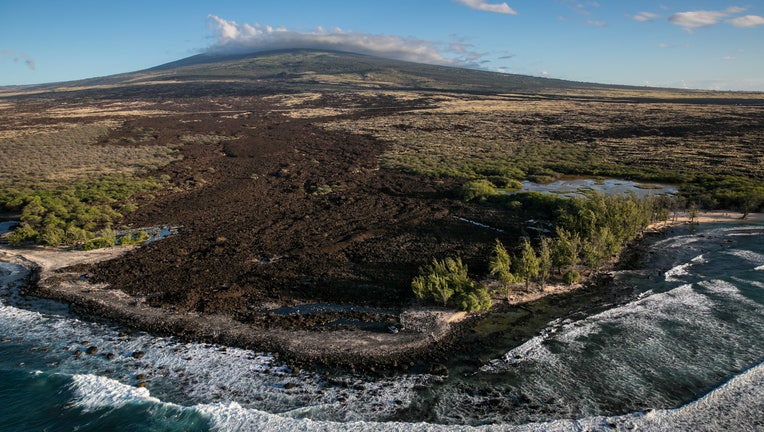MAUNA LOA VOLCANO
1.Context
Mauna Loa, the largest active volcano in the world, indicating it could erupt Officials on the Big Island of Hawaii are telling residents to be prepared in case it does erupt soon.
2.About Mauna Loa
- Mauna Loa is the largest active volcano on the planet. Meaning "long mountain" in Hawaiian is the quintessential shield volcano in its shape— signified by broad, rounded slopes. The volcano makes up roughly 51% of Hawaii Island and stands 13,681 feet (4,170 m) above sea level
- Mauna Loa is one of five volcanoes that together make up the Big Island of Hawaii, the southernmost island in the Hawaii archipelago.
- It sits immediately north of Kilauea volcano, which is currently erupting from its summit crater. Kilauea is known for a 2018 eruption that destroyed 700 homes and sent rivers of lava spreading across farms and into the ocean.
- Mauna Loa last erupted 38 years ago. Since 1843, it has erupted 33 times.
- The Big islands are mostly rural and are home to cattle ranches, coffee farms, and beach resorts. It's about 320 km south of Hawaii's most populous island, Oahu, where the capital Honolulu is located.

|
Comparing Mauna Loa and Kilauea Mauna Loa’s eruptions differ from Kilauea’s because it is taller. Its greater height gives it steeper slopes, which allow lava to rush down its hillsides faster than Kilauea's. Its enormous size may allow it to store more magma, leading to larger lava flows when an eruption occurs. |
3.Eruptions
Each eruption since 1843 started at the summit of the volcano. Volcanoes later also began erupting from vents at lower elevations. The other half of the time it only erupted in the summit caldera. An eruption from vents on the southwest rift zone could hit residential communities on the west side of the islands. Lava could reach homes in just hours or days.
4.Will Mauna Loa have an explosion eruption?
- Fifty-seven people died in 1980 when Washington State’s Mount St Helens erupted and blasted more than 1,300ft (400 meters) off the top of the mountain. Steam, rocks, and volcanic gas burst upward and outward. A plume of volcanic ash rose over 80,000ft (24,000 meters) and rained down as far as 250 miles (400km) away.
- Hawaii's volcanoes tend not to have such explosive eruptions. That's because their magma is hotter, drier, and more fluid.
- The magma in Mount St Helens tends to be stickier and traps more gas, making it much more likely to explode when it rises. The gas in the magma of Hawaii’s volcanoes tends to escape, with lava flowing down the side of their mountains when they erupt.
- Hawaii’s volcanoes are called shield volcanoes because successive lava flows over hundreds of thousands of years built broad mountains that resemble the shape of a warrior’s shield.
- Volcanoes like Mount St Helens are called composite or stratovolcanoes. Their steep, conical slopes are built by the eruption of viscous lava flows and rock, ash, and gas
5.Vents of Volcanoes
Vents generally form along the volcano's rift zone. Where the mountain is splitting apart, the rock is cracked and relatively weak and it’s easier for magma to emerge.
6.Monitoring Mauna Loa
The Hawaii volcano observatory has more than 60 GPS stations taking measurements. Scientists use tilt meters to track changes in the ground tilting and identify when the ground is swelling or deflating.
A thermal webcam at Mauna Loa’s summit will identify the presence of heat. And satellite radar can keep track of ground swelling and deflation.
|
For Prelims: Vents, Active Volcanoes, Mauna Loa location, Kilauea For Mains : What are the various types of volcanoes? Discuss about Mauna Loa volcano. |
Source:indianexpress




